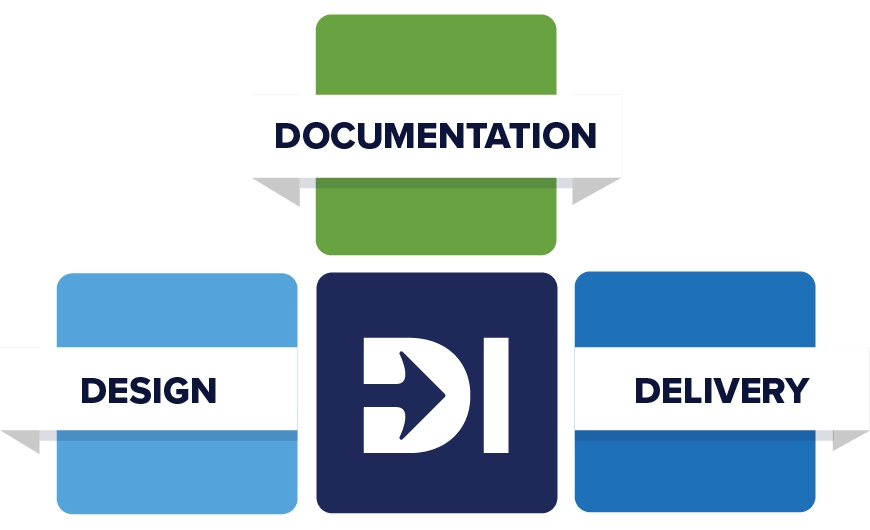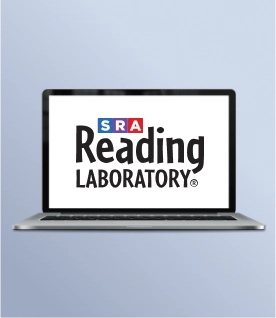My Account Details

Unlock the Power of Direct Instruction
Fundamentally Inclusive, Exceptionally Powerful
Backed by the most extensive education research study in US history, Direct Instruction is one of the most effective ways to teach complex content. Rooted in concept mastery design, prescribed delivery, and over 60 years of documented success, DI remains an essential strategy for educators to address compounded learning loss and grade-level gaps among diverse student populations.
Direct Instruction Pedagogy
The Direct Instruction methodology is designed to ensure that learners from every background can meet and exceed achievement goals. Carefully scaffolded lessons introduce new content by building directly on the foundation of previously mastered material. A four-part instructional sequence ensures student mastery:
- Model – Teachers demonstrate the desired response.
- Lead – Teachers respond along with students.
- Test – Students provide the correct response independently.
- Retest – Teachers provide corrections if needed.
To position every student and teacher for success, Direct Instruction content is delivered via prescribed lessons that follow a "signal, pace, and praise" framework for interactions:
- Signal – Signals and group responses hold students’ attention.
- Pace – Just-right pacing keeps students on task.
- Praise – Frequent positive reinforcement motivates students and celebrates accomplishments small and large.
For over 60 years, Direct Instruction programs have been documented to prepare students from every background for success.
- At East Side Charter School, the percentage of Grade 3 students meeting or exceeding state standards in reading jumped from 20% to 83% in just one year.
- In Verona, Washington, students performing at or above the 50th national percentile rose from 58% to 90% in reading and from 51% to 85% in math from Kindergarten to Grade 1.
- At John R. Kment Elementary, there was a 56.1% average decrease in the number of Tier 3 students in Grades 2–6 and a 77.4% increase in the number of Tier 1 students in the same grades.
Read more about efficacy and success here.

Authors
Siegfried Engelmann

Siegfried "Zig" Engelmann passed away on February 15, 2019. Much of his life was dedicated to improving the future of all children. Zig, senior author of Direct Instruction programs, was the director of the National Institute for Direct Instruction and former professor of education at the University of Oregon. He has authored over 100 programs, ranging from beginning reading to elementary chemistry and earth sciences. His principal efforts have focused on at-risk, deaf, Down Syndrome, and autistic children. He has authored 60 chapters, over 100 articles, and 20 books on educational psychology and instruction, including Theory of Instruction (with Douglas Carnine). He has been involved in nine major research projects and has received the 2002 Award for Education Research from the Council of Scientific Society Presidents. His other awards include the Fred Keller Award from the American Psychological Association and an honorary doctorate from Western Michigan University.
Wesley Becker
Wesley Becker was one of the original developers of Direct Instruction and the director of the Direct Instruction Follow Through Model. His research continues to be an important foundation for Direct Instruction curriculum. Wes passed away in October 2000.
Elaine Bruner
Elaine Bruner has contributed to Direct Instruction reading programs and has written extensively on and trained teachers in Direct Instruction classroom methods.
Douglas Carnine
Douglas Carnine is a former professor of education at the University of Oregon and director of the National Center to Improve the Tools of Educators. Carnine was a National Science Foundation Fellow in Psychology as an undergraduate at the University of Illinois, where he graduated with distinction and as Phi Beta Kappa in 1969. He completed his M.A. in special education at the University of Oregon in 1971 and his Ph.D. in educational psychology at the University of Utah in 1974. A man with many varied research interests, Carnine has directed or co-directed over 20 federally funded grants totaling over 15 million dollars. Carnine is a co-author of Connecting Math Concepts, DISTAR Arithmetic, and Corrective Mathematics. He also co-authored texts in elementary and middle school science, world history and U.S. history and secondary English language arts.
Linda Carnine
Linda Carnine holds a Ph.D. from the University of Oregon with specialties in curriculum and instruction, special education, and educational research. She has done extensive research in the field of reading where she took a longitudinal look at the reading errors made by students in kindergarten and first grade. As an educator for over thirty years, she has taught at the preschool, elementary, secondary, and post-secondary levels. After completing her Ph.D., she entered school administration, where she served as an elementary principal, a director of special services, and curriculum coordinator. Dr. Carnine is now working as a private educational consultant.
Karen Davis
Karen Davis received her master’s degree in education from the University of Oregon. A former elementary classroom teacher, she was a co-author of Direct Instruction programs in reading and language arts. She also conducted “rough draft” tryouts of programs that were under development. She taught preliminary versions of programs to students in her classroom, kept detailed notes on problems students encountered during lessons, collected data on student performance, and modified lessons. Karen passed away in November 2016.
Robert Dixon
Robert Dixon wrote a numerous and diverse selection of educational materials, including spelling programs published by SRA. His experience in education extended to the designing of computer-based educational courseware, which is used by schools throughout the country. Because of this expertise, government officials asked for his help with many important educational issues. He worked with Siegfried Engelmann to develop computer-driven support for the revision of Reading Mastery, Language for Learning, Corrective Reading, and Connecting Math Concepts. Bob passed away in July 2013.
Julie Eisele
Julie Eisele worked with children, teaching reading to students with traumatic brain injuries. She also worked with teachers on a school-wide project to improve academic achievement, helping teachers to develop their teachings skills, to reach out to at-risk students, and enhance their classroom-management skills.
Owen Engelmann
Owen Engelmann has worked with the developers of the Direct Instruction model since 1984. He has co-authored programs in math and reading. He has also acted as an implementation consultant in schools with diverse populations, including Hispanic-American students in Utah and African-American students in Baltimore.
Bonnie Grossen
Bonnie Grossen has over 30 years of experience working in intervention and special education as a teacher, administrator, and program author. She is a frequent keynote speaker at educational conferences and has been published dozens of times in professional education journals. Grossen serves as the executive director of the Center for Applied Research in Education, a non-profit organization that provides implementation guidance for schools implementing secondary Direct Instruction intervention in mathematics, reading, and writing.
Phyllis Haddox
Phyllis Haddox retired from the University of Oregon’s College of Education where she trained and supervised teachers and also served as coordinator of the Direct Instruction Model of the Follow Through Project. Dr. Haddox has done extensive work in designing curriculum including authoring DI instructional programs for schools and parents and produced training videos. With school districts, she worked with administrators, teachers, paraprofessionals, students, and parents. She worked directly in classrooms as well as provided needs assessment, evaluated curriculum implementation, and designed management and teacher support systems for schools, districts, and agencies.
Susan Hanner
Susan Hanner has worked with the developers of the Direct Instruction instructional model since 1970 and has co-authored direct instruction programs in reading. Her work with Siegfried Engelmann has focused on designing effective strategies for memory development and reading comprehension. At present, she is focusing her efforts on naturalistic classroom studies which examine how students acquire vocabulary and concepts associated with science and social studies.
Gary Johnson
Gary Johnson holds a Ph.D. from the University of Oregon and previously worked as a teacher and vice principal of an elementary school. He has extensive experience in planning and conducting in-service training sessions and supervising and evaluating instruction. For many years, he has focused his work on developing school-wide implementations of Direct Instruction programs in schools serving at-risk students in Chicago, Salt Lake City, and Portland, Oregon.
Bernadette Kelly
Bernadette Kelly is an expert in mathematics. She co-authored Levels C and F of Connecting Math Concepts: Comprehensive Edition and Levels E, F, and the Bridge level for the 2003 edition. She was a co-author on the 1994 revision of Connecting Math Concepts. She also co-authored Essentials for Algebra, which SRA published in 2008. Bernadette has been a teacher-trainer, presenter, and consultant working with school districts in several states to provide in-service training and classroom coaching with at-risk populations. She has lived and worked in the U.S., the U.K., and South Africa.
Linda Meyer
Linda A. Meyer, Ph.D., passed on December 31, 2019, in Urbana, Illinois. She held B.A. and M.A. degrees from the University of Illinois Urbana-Champaign and a Ph.D. in educational psychology from the University of Oregon. Linda worked on the Follow Through Project. She also worked with Engelmann and others in the development of the Corrective Reading Program. Linda returned to the University of Illinois at Urbana-Champaign and directed longitudinal research on children and learning at the Center for the Study of Reading. In 1996, she received the Harold Mitzel Award for Educational Practice from the Journal of Educational Research for the results of that study.
Jean Osborn
Jean Osborn, a well-respected educator and textbook author, passed away on June 20, 2021. Jean Osborn was the director of the Center for the Study of Reading at the University of Illinois. Known for research based on classroom observations and analysis of reading materials, she has served as a consultant to the states of California and Texas regarding textbook adoption and the National Commission on Reading for Becoming a Nation of Readers. She is a frequent speaker at conferences sponsored by publishers of educational materials, the Department of Education, and the International Reading Association. Jean was also appointed to the advisory board for the National Institute for Literacy.
Steve Osborn
Steve Osborn’s exceptionally strong writing skills, as well as his specialization in children’s literature and educational materials, complements the skills of other contributing authors. He holds degrees in English literature and fine arts from Sonoma State University and the Art Institute of Chicago.
Jerry Silbert

Jerry Silbert has worked with Direct Instruction for 40 years and holds degrees in education, special education, and business administration from the University of Oregon, the University of Minnesota, and the City College of New York. For many years, he served as a classroom teacher, working in a high-poverty elementary school. During his tenure, Silbert field tested a wide variety of Direct Instruction programs designed for intermediate grade students who were several years below grade level. He has authored numerous textbooks and instructional programs. Silbert spent a significant amount of time serving as a consultant to elementary schools implementing Direct Instruction including work with schools in Chicago, Ft. Worth, Houston, Dayton, Columbus, and Los Angeles, helping schools plan and implement the DI programs.
Don Steely
Don Steely has spent 40 years working with Direct Instruction, during which he has been a classroom teacher, teacher trainer, bilingual program director, consultant, researcher, and instructional designer/author. He has developed print and multimedia instructional programs for both hearing and deaf students in science, math, reading, spelling, and history. Steely has degrees from the University of Illinois, University of Oregon, and Honolulu University.
Leslie Zoref
Leslie Zoref is a contributing writer who has a strong teaching background. She has worked with elementary and middle schools students. She holds degrees in psychology, school psychology, and curriculum and instruction from Michigan State University, Western Michigan University, and the University of Oregon.
Jill Allor


Jill Allor is a professor and chair of the Department of Teaching and Learning at Southern Methodist University. She received an Ed.D. in special education with an emphasis on reading and reading disabilities from Peabody College of Vanderbilt University in 1996. A former special education teacher, her research is school-based and focuses on reading acquisition for students with and without disabilities, including students with learning disabilities or intellectual disabilities. Prior to arriving at SMU in 2004, she held faculty appointments at Florida State University and Louisiana State University. Allor is the author or co-author of numerous articles and several curricular materials.
Elsa Cárdenas-Hagan
Elsa Cárdenas-Hagan is the founder and director of the Valley Speech, Language, and Learning Center in Brownsville, Texas. A bilingual speech-language pathologist and a certified academic language therapist, Elsa works with the Texas Institute for Measurement and Evaluation and Statistics at the University of Houston. She also serves as chair of the Texas Dyslexia Advisory Committee and was appointed a member of the state’s Advisory Council on Early Childhood Education and Care. She earned her Ed.D. in curriculum and instruction and her M.A. in communication disorders from the University of Houston, and her B.S. in speech from the University of Texas at Austin. Her research interests include the development of language and literacy interventions for students who are English learners (ELs).
Nancy Marchand-Martella


Dr. Marchand-Martella is chair and professor of educational psychology at the University of Oklahoma, teaching classes in academic remediation with a focus on reading, writing, spelling, and mathematics interventions. She has more than 30 years of experience working with at-risk populations and more than 190 professional publications credited to her name. She is an author of Multiple Meaning Vocabulary published by Sopris West/Cambium Learning, and a McGraw-Hill author of Lesson Connections and Core Lesson Connections and adolescent literacy program Read to Achieve.
Ronald C. Martella

Dr. Martella is a professor of special education, teaching classes in behavior management and research methodology. He is a board-certified behavior analyst and has served as a School Wide Positive Behavior Support (SWPBS) coach and Leadership Team member. He also provides technical assistance to numerous states and districts on SWPBS/behavior management for students with or without disabilities. Dr. Martella has more than 170 professional publications and is a McGraw-Hill author of Lesson Connections and Core Lesson Connections for Reading Mastery Signature Edition and adolescent literacy program Read to Achieve.
Patricia Mathes

Dr. Patricia Mathes is the director of the Institute for Evidence-Based Education at Southern Methodist University. She is a former classroom and reading teacher who received her Ph.D. in 1992 from Vanderbilt’s Peabody College of Education and Human Development. Mathes has served on the faculties of Pediatrics at the University of Texas Houston Medical School, the College of Education at Florida State University, and Peabody College for Teachers at Vanderbilt University. Since 1991, she has been conducting large-scale, classroom-based reading intervention research.
Sharolyn D. Pollard-Durodola
Sharolyn D. Pollard-Durodola is associate professor of literacy at the Morgridge College of Education, University of Denver. She served previously as associate professor of bilingual education programs in the Department of Educational Psychology at Texas A&M University. Prior to joining Texas A&M, she was an assistant professor of pediatrics at the Center for Academic and Reading Skills, University of Texas – Houston Medical School. She has served as a research coordinator, curriculum developer, and mentor teacher at the Center for Academic and Reading Skills, University of Texas – Houston Health Science Center, and she has worked as an assistant principal, a reading teacher, and a reading specialist in the Houston Independent School District.
Robert Dixon
Robert Dixon wrote a numerous and diverse selection of educational materials, including spelling programs published by SRA. His experience in education extended to the designing of computer-based educational courseware, which is used by schools throughout the country. Because of this expertise, government officials asked for his help with many important educational issues. He worked with Siegfried Engelmann to develop computer-driven support for the revision of Reading Mastery, Language for Learning, Corrective Reading, and Connecting Math Concepts. Bob passed away in July 2013.
Sylvia Linan-Thompson

Sylvia Linan-Thompson is an associate professor at the University of Texas at Austin. She was associate director of the National Research and Development Center on English Language Learners (2005–2009) that examined the effect of instructional practices that enhance vocabulary and comprehension for middle school English language learners in content areas. Sylvia is currently the principal investigator of a study examining the academic language development of second-grade and third-grade students.
Joseph Torgesen
Joseph Torgesen is a leading expert in the field of reading intervention. Torgesen has spent the past 15 years focusing specifically in the areas of reading and reading intervention. Joseph is the Robert M. Gagne Professor of Psychology and Education at Florida State University and the director of the Florida Center for Reading Research. He was appointed as the W. Russell and Eugenia Morcom Chair of Psychology and Education at FSU. He currently serves on the Board of Directors of the National Institute for Education Sciences and is widely recognized for his research on the prevention and remediation of reading difficulties.













































